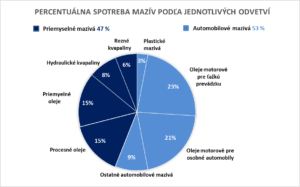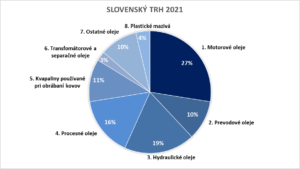Lubricants have an important position in the operation of machinery and devices.
In technical practice, the role of lubricants is to prevent direct contact of surfaces during their mutual movement and thus reduce friction and its consequence, the wear.
In terms of state are lubricants divided into:
– gaseous (air, helium, nitrogen and others)
– liquid (petroleum, synthetic, vegetable oils, water and others)
– plastic lubricants
– solid (graphite, MoS2, PTFE and others).
Lubricants not only ensure correct lubrication of machines and devices, but also provides us with important information about their technical condition when performing tribotechnical diagnostics. New, more powerful machines and thus more demanding operating conditions, such as higher operating temperatures, revolutions, high and irregular loads, smaller compact designs, smaller oil fillings, higher circulation numbers of lubricating oil, also require a new range of lubricants. Modern lubricants have higher thermal and oxidative stability, longer lifespan, better friction properties, have an impact on reducing fuel and energy consumption, and also have a positive impact on the environment. Due to the expected development in the field of construction of new and more powerful machines, requirements for extending the lifespan of lubricants and also environmental protection, significant changes in the range of lubricant sortiments can be expected in the near future.
The current situation worldwide
We will pay particular attention to lubricants and their development, which can be expected in the coming years. In the view of this, we present in Figure 1 the generally quoted percentage consumption of lubricants according to individual industries. According to available information, the worldwide lubricant consumption is estimated to increase by 2.4% per year.
Figure 1

The current situation in Slovakia
The annual consumption of lubricants in the Slovak Republic is estimated at about 40,000 tons. Of this amount, there are about 16,000 tons of lubricants for mobile vehicles, the so-called automotive lubricants and 24,000 tons of lubricants for industrial applications. Interestingly, the annual consumption of lubricants in the early 80’s in Slovakia was about 90,000 tons. At present, only a small amount of consumed lubricants is produced in Slovakia. More than 95% is imported. In Figure 2, SAPPO members estimate the consumption of lubricants in Slovakia by their industrial use.
Figure 2


